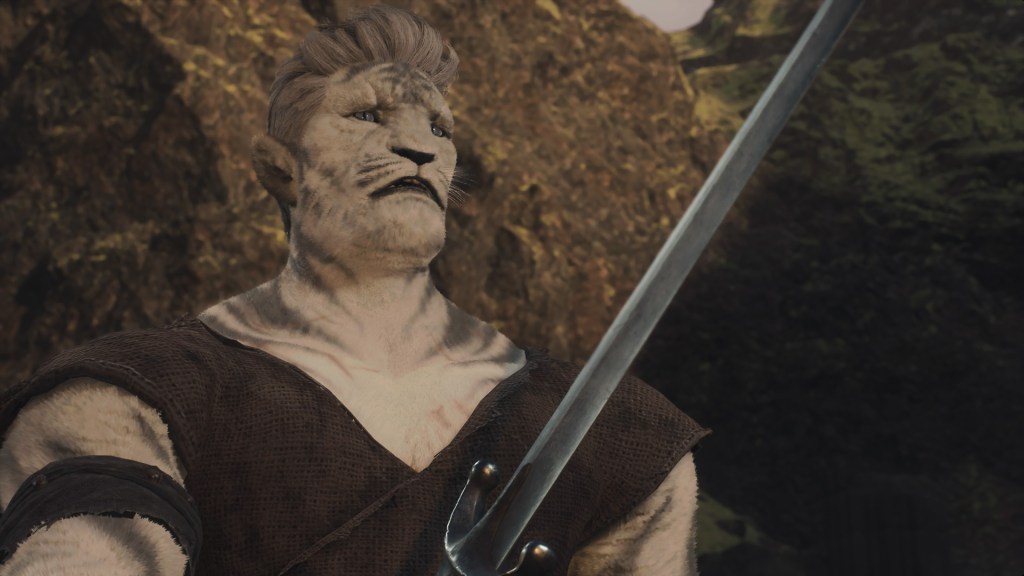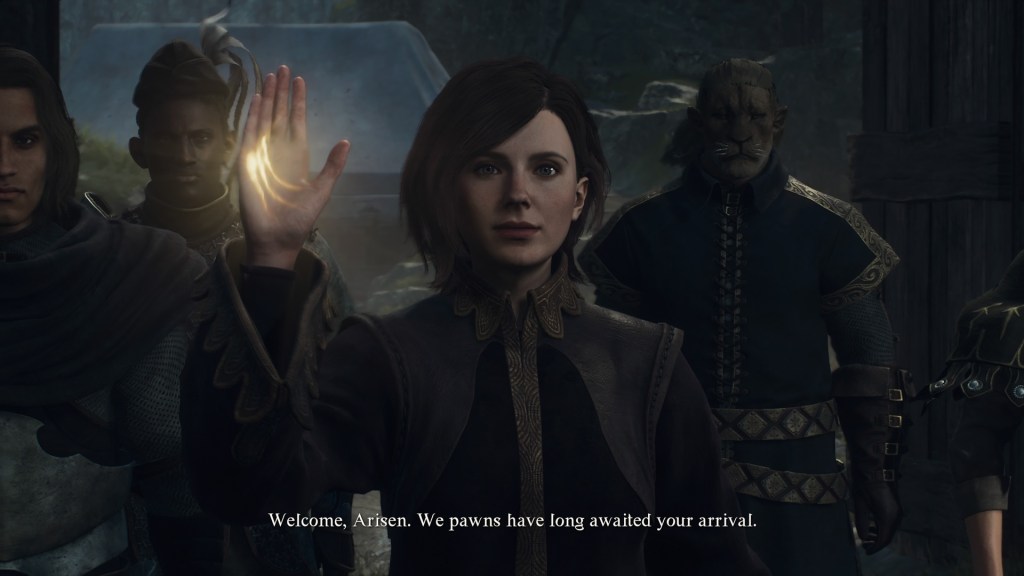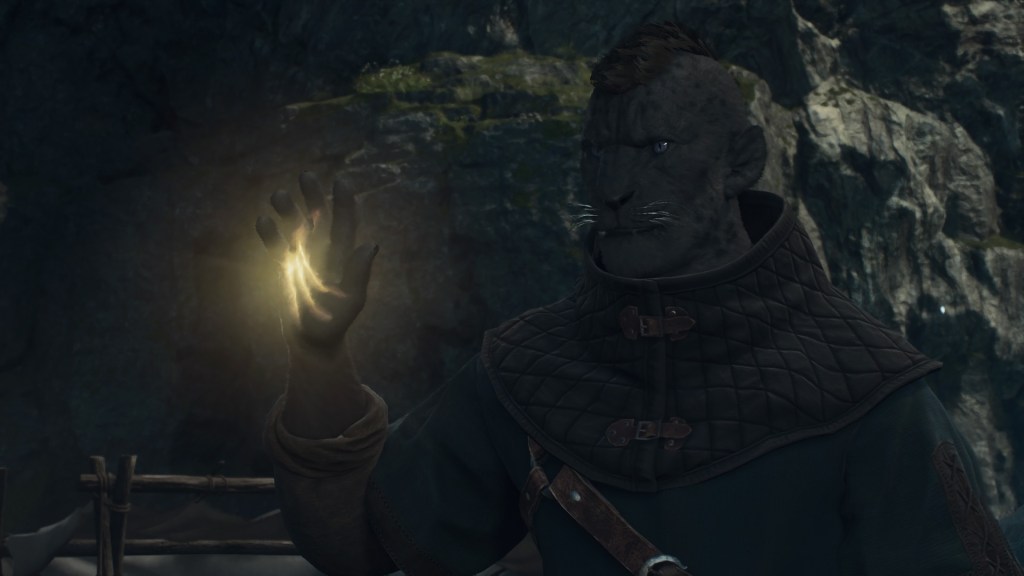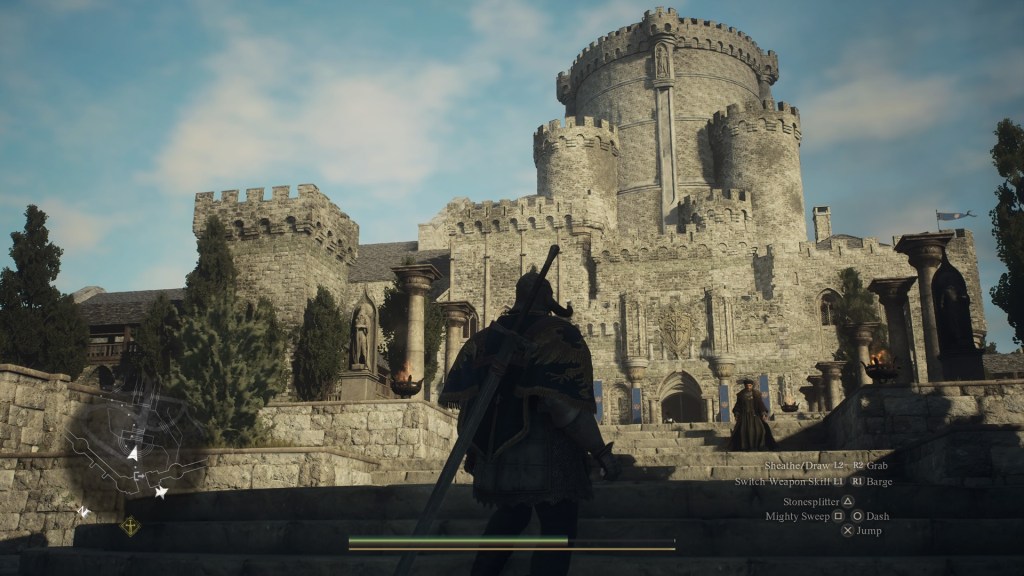Dragon’s Dogma 2 essentially exists in its own pocket universe. This open-world action RPG has its own internal logic that’s wholly singular compared to similar games in the fantasy genre. It’s not quite Dark Souls nor The Elder Scrolls nor The Witcher 3, but somewhere else in between them all on the other side of the looking glass. Fans of the first Dragon’s Dogma will understand how unusual this world can be for newcomers, and this sequel successfully builds upon what made the original game a cult classic. This isn’t to say that Dragon’s Dogma 2 doesn’t have moments of frustration and a few gameplay systems that are janky in an old-school way, but to a degree, that’s all part of the charm.
Newly Arisen, one more time

Similar to the plot of the first Dragon’s Dogma, this sequel is about cycles and whether they should be perpetuated or broken. It’s an Eastern narrative trope in a Western fantasy world. Whenever the dragon appears in the world, it chooses an Arisen who is bound to slay it. That should have been the destiny for your character too, but something goes awry.
The opening chapter sees the Arisen performing menial labor in a distant land and not knowing anything about being the chosen one. It’s only by a twist of fate and one turbulent ride on a griffin that your character returns home to the kingdom of Vermund. However, another Arisen apparently exists, which should be impossible, and has claimed the throne in the capital. Many forces conspire to deny the true Arisen from being the rightful ruler, and it falls to you to set things right.
As you progress through the story, you’ll get caught up in political intrigue and a scheme that involves both Vermund and its neighboring country Battahl. I won’t say too much past that to avoid spoilers. Suffice it to say, the plot is satisfactory for the most part. The lore isn’t as grounded as it is in The Elder Scrolls, nor as cryptic as it is in Dark Souls. While most cutscenes and NPCs aren’t particularly momentous and the voice-acting is spotty at times, the dialogue is written well enough to carry quests forward. That said, much like in Skyrim, the game is much more about exploring the open world, with the main storyline acting primarily as a way for you to take in the sights and travel from one side of the map to the other.
Succumb to wanderlust

Exploration is remarkably rewarding in Dragon’s Dogma 2. Even if you don’t have a side quest telling you where to go, pointing in a direction and wandering over there scratches that itch for discovery. Sometimes you’ll find a treasure chest tucked away in the corner or behind a cave wall, a golden trove beetle that will permanently increase your carrying capacity, or some flowers, fruit, ore, or other materials that you can combine to create health items. If you’re lucky, you’ll uncover enough shards to form a Wakestone that can be used to revive your character or an NPC that might have been accidentally killed. Also tucked away in the most remote nooks and crannies are Seeker Tokens, 240 of which are scattered around the world and can be handed over at a vocation guild for extra rewards.
On the downside, fast travel is rather finicky and restrictive. Like the original game, you can use ferrystones to travel instantly between portcrystals, but not all major cities have a permanent portcrystal. Instead, you need to find portable portcrystals first as rewards, which is something you likely need to look up since the game provides very few hints on obtaining them. Also, ferrystones are rare consumables that are difficult to find and expensive to purchase, so it’s not something to throw around on a whim. The game tries to alleviate some of this by adding new oxcarts that allow you to travel from one town to another, though I regularly had the oxcart be raided by enemies and then destroyed. Being forced to travel on foot is a frustratingly common occurrence, a problem made worse since some quests are timed.
Vocation sensation

Outside of towns, the world of Dragon’s Dogma 2 is a hostile one, with enemies littering every road, temple, forest, and cave. It’s a wonder that anyone is able to travel safely anywhere, even with guards on the main thoroughfare. Fortunately, that means a lot of combat, giving the Arisen plenty of opportunities to earn experience points and learn skills from multiple vocations. It’s up to you whether you prefer the melee-oriented Fighter and Thief, the ranged Archer, or the slight but powerful Mage. That said, those are just the starting vocations and you can unlock others like the Warrior, Magick Archer, and Sorcerer by completing various quests. Switching between vocations is easy enough at a guild, though you’ll need the cash and materials to purchase and upgrade class-specific equipment.
Most fights will be against goblins, saurians, harpies, and bandits, but occasionally you’ll need to contend with powerful bosses out in the field that have multiple health bars. Dragon’s Dogma fans will recognize many of these, including ogres, griffins, and chimeras, and you’ll need to pinpoint weakpoints, apply debilitations, and exploit elemental affinities to take them out. Sometimes this means having to climb onto the boss, hacking away at specific spot to stagger it and make it vulnerable. Certain creatures will also only appear at night too, requiring you to turn on a lantern to get your bearings. Whichever vocation you choose, you’ll need to monitor your stamina carefully, evade enemy attacks, and monitor the health of your companions.
Back to the pawn shop

On that front, this sequel features an Improved pawn system, making it easier to round out your party with members of different vocations. In addition to your main pawn, you can call upon two more pawns that other players have made by summoning them from a riftstone. You’ll also find various types of riftstones peppered about the world and random pawns meandering around that you can hire on the spot, though the riftstones in major towns will let you search for pawns with the specific vocation, level, appearance, and specialization that you want. If you’re having trouble with certain quests, which happens often since many of them have vague objectives, you can hire pawns with specific knowledge to provide a few clues.
Pawns fight autonomously fairly well, not needing you to command them too often in combat. The AI controlling them gives enough support that their aid is helpful while not undermining your role. They also serve as pack rats, which is useful since materials add up quickly and camp supplies weigh a lot. Getting hit in combat reduces your party’s maximum hit points, so you’re encouraged to restore this by resting at a campfire, which is typically cheaper than an inn anyway and allows you to cook meat for temporary buffs.
However, pawns have a habit of falling from cliffs, making it tough to reach them when they’re down, or spilling into the water, which is a death pit for anyone who wades in for too long. They also tend to repeat the same conversations and words of advice far too frequently, and some of their specializations can’t be tuned in any way. The Chirurgeon specialty gives pawns the ability to use potions but they do so at a high rate, and the Forager specialty lets pawns gather materials but they sometimes rob you of the thrill of opening a chest on your own
With dogmatic constitution

If you make a beeline through the main storyline, it will take roughly 25 hours to complete, but that’s ignoring any detours and does not include the endgame. Finishing every quest and exploring the world to its fullest extent will easily take 80 hours or more. In addition to new game plus, you can also unlock an epilogue that will require a lot of proper time management and strategic combat to finish with the best possible outcome.
To address the microtransactions, they unfortunately do leave a bitter aftertaste. They’re avoidable in that you can find everything you need by playing the game. But just the possibility of purchasing wakestones and portcrystals, even if it’s a limited amount, will rub some players the wrong way. So it’s understandable if that’s a dealbreaker.
Dragon’s Dogma 2 is a funny valentine. The graphics aren’t particularly stunning, quest progression can be vague, and it has some deliberately old-school ideas that are frustrating to deal with. Still, the game is able to capture a sense of freedom and wonder while delivering on challenging boss fights throughout exploration. It’s one of the few games that has made me want to investigate every inch of the world map without any prompting by the game through a notification or a quest. And I haven’t had that sensation in an astonishingly long time.
Disclosure: Dragon’s Dogma 2 PS5 code provided by publisher.
-
Exploration is well-rewarded
-
Numerous, flexible vocations
-
Challenging boss battles
-
Exciting epilogue and new game plus
-
Plenty of content and side activities
-
Fast travel options are frustrating
-
Pawns have trouble with cliffs and repeat themselves often
-
Some unnecessary microtransactions








